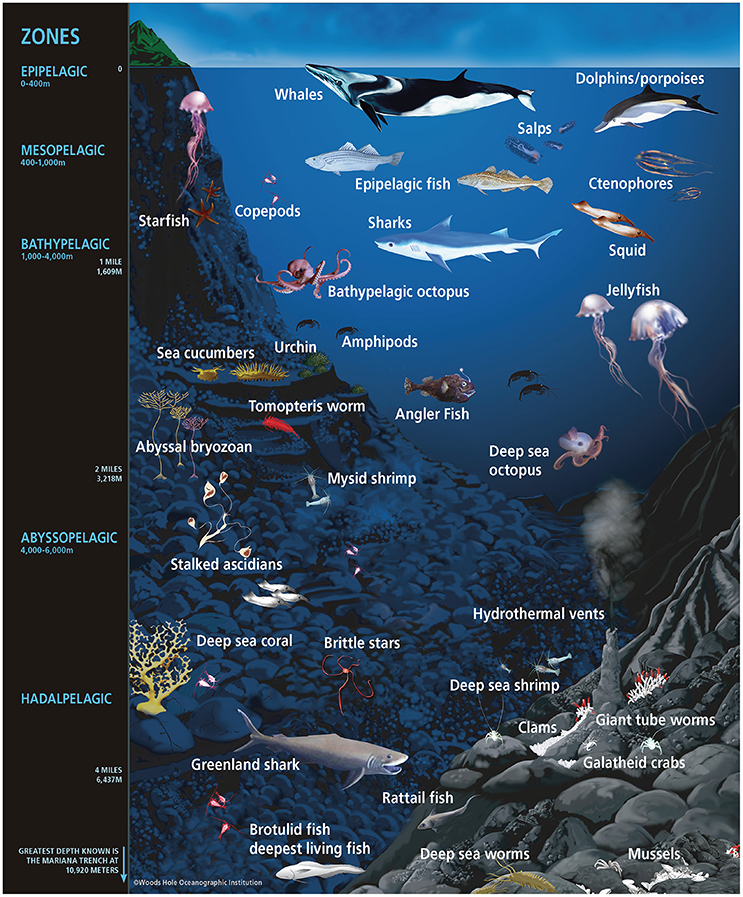
The pelagic zone is an area of the open ocean that has five regions:
- Epipelagic (maximium light as its on the surface level)
- Mesopelagic (minimal light, where marine life survive on organic matter that sinks into it)
- Bathypelagic (no light, and marine life have adapated to their conditions)
- Abyssopelagic (the biggest layer with limited food, low temperatures, and high pressure)
- Hadalpelagic (the deepest layer that goes into ocean trenches so expect even higher pressure and very unique marine animals and organisms)
In terms of its ecosystem, the pelagic zone is home to a wide variety of marine life such as krill, jellyfish, whales, sharks, clams, and deep sea shrimps. Fun fact: the yellow-bellied sea snake is a venomous species that spends its entire life in the pelagic zone and is the only marine snake to do so.
Filed under: animals aquatic ecology marine biology oceans water whales